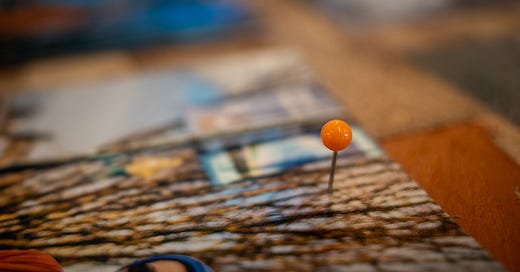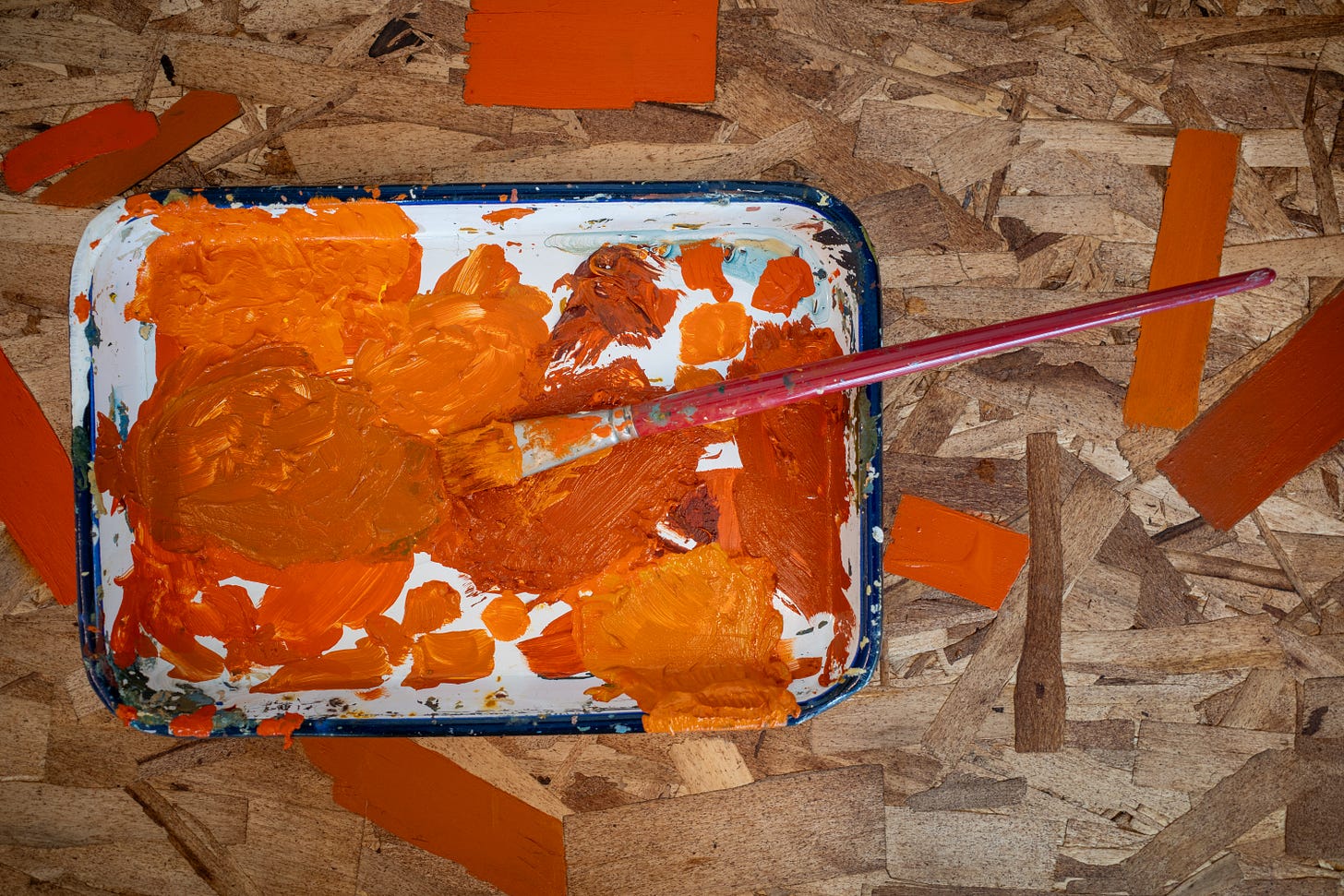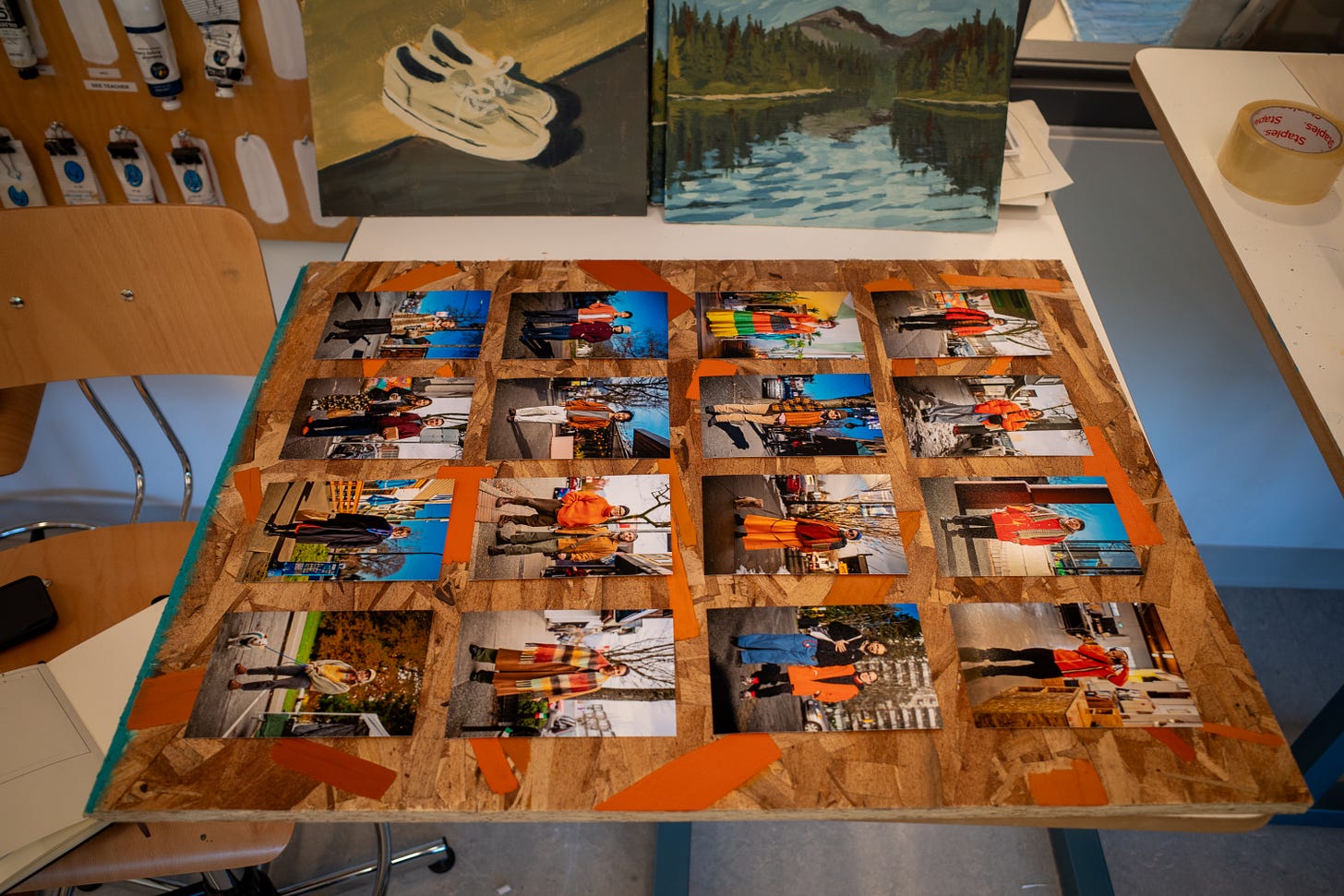INS(oev)IDE #16 - Unintentionally Trending
Exploring how trends emerge organically, this display captures East Vancouver’s unexpected winter fascination with shades of orange—inviting you to step outside and experience local style firsthand.
INS(oev)IDE is my attempt to give a behind the scenes look at my street photography project seasonsofeastvan.
If you’d like to continue following along, or if you’d like to check out my other Substack sections GENEs (interviews with locals) and DiPartures (non-photography or style related content), please consider subscribing below.
I’ve been working on this for weeks now, both the physical artwork I will explain at the end, and this writing to compliment it, anticipating the next phase of my photography display. At the same time, I’ve been thinking about something I keep seeing online. This concept continues to get shared with me by people on Instagram and my own friends. It’s not new—as Sean Monahan (one of my favorite Substack writers right now) pointed it out in his most recent 8Ball “things right now 027”, and he links back to discussions on it since 2015—but it’s been gaining traction lately:
The idea that “trend forecasting is going out of style.” Since social media moves so fast, microtrends rise and die so quickly that larger, era-defining trends no longer exist. That we’ve entered an era of “anti-trend,” where personal style is free from overarching influence, or, that trends move so fast, that the ability for era-defining trends won’t exist any more. I feel like every time I open Substack these days, I see another article addressing this, so I guess I am joining the fray.
At first, I agreed. I’ve seen firsthand, but I’d say, in a positive way; this neighborhood has been in a perpetual state of “do whatever you want”—long before it was called a movement. Here, I argue, it comes from a community that embraces many different types of people, celebrates unique style and allows people to be themselves, but also takes pride in being slightly avant-garde in the way we dress, with many influential stores and artists in the area.
As I go back season after season and look at the photos as a collective and the more I think about “trends being dead”, the more I find myself finding things that are definitely trends and I tend to disagree that it’s “over”, however, it does seem to get more nuanced.
Declaring trends dead is itself a trend. Saying you’re anti-trend means you’re consciously working against something—which means that thing is still influencing you. If you look at what’s popular and say, “Fuck that, I’m doing my own thing,” you might be breaking away, but you’re still reacting to it. And, inevitably, some of those reactions will catch on, becoming the very thing they were resisting. This is how countercultures become mainstream. Whether macro, or micro, at the end of the day, we still see it happen.
People who care about style—whether they follow or reject trends—are making decisions based on observation. They look at what others wear, assess what resonates (or doesn’t), and build their own look from there. That’s what I love about shooting street style: it’s a living document of what’s happening right now, before it gets distilled, commodified, and repackaged online. Or maybe you could argue, it’s shooting the personal distillation of what is already online, the lines are getting blurred. At the end of the day, it’s human nature; we are observant and curious creatures. We constantly take in what we see around us, and slowly consolidate it.
I will admit, self-loathingly, I’m part of this cycle. I share what I see in the real world, and in doing so, I contribute to the digital conversation about what’s “in.” That was never my intention, but I can’t deny my own biases. Being a “trend forecaster”, while seems like a fun an interesting career path, was never my goal in collecting these photos, participating in these writings, or posting the collections on social media. In my personal style, I’ve always liked being ahead of the curve or pushing against the mainstream, but at the end of the day, my taste is shaped by my surroundings. I pull from what I see—sometimes consciously, sometimes unconsciously. What’s available in second hand stores, what works in this climate, what feels right at the moment.
What has changed now though, with regards to this collection of photos is the desire to do something more physical. Partially a desire to create something within the community and also drawing people physically to a space. Not just to see the photos, but to experience the neighborhood on the way there. To absorb what’s actually happening, rather than just what’s trending online. Instead of experiencing what the neighborhood has to offer passively on your screen, come experience it in real life. As Sean Monahan put it:
"When I say stop looking at the internet, I mean that you should stop taking it seriously and start taking it literally… But you should be more indifferent to it and—I say this without a hint of condescension—you should go outside. Go for a walk. If the trends on your screen do not waft along with the spring breeze, feel free to ignore them."
There’s a French term in winemaking: terroir. It refers to how the land, weather, and culture shape the taste of a wine. I think about style the same way. There’s a terroir to east van—formed by the climate, what’s available in thrift shops, what people around you wear. It’s not fully dictated by the algorithm and you can smell it, see it, and feel it when you are here.
That’s the essence of what I want to capture. Not forecasting what’s next, but documenting what is. When you pay attention to the streets, you don’t need the internet to tell you where trends are going. You can already see them happening and it helps shape your next purchase in multiple ways, both in supporting local businesses, and potentially, incorporating a local style.
The Orange Board
My first display will be available at Alterior this week.
After over a month of prototyping, iterating with friends, and experimenting with different ideas, this piece is finally ready—just in time to mark the end of winter and transition into spring.
The inspiration for the images in this project came from a phenomenon I’ve been noticing lately: the emergence of different shades of orange in the neighborhood. As I mentioned in a previous article, I’ve never been particularly fond of the color, but this winter, something about it completely captivated me.
This new piece captures the trend of the season, celebrating the warmth and brightness of orange during an otherwise dreary winter. The diversity of shades, accents, and styles of orange that I've seen around me is what fascinates me most. There’s a whole spectrum of people and oranges, and the variety feels alive and layered.
But here’s the question: is this a macro trend? According to Marie Claire, orange was a major presence on the runways for Spring/Summer 24 in New York, London, Milan, and Paris. How did this global color trend filter down into east van? Was it someone who first donned a bold orange puffer, sparking a ripple effect throughout the neighborhood? Or did it happen just to me, subliminally, with my eye tuned to collect images of this shade, eventually bringing me to create this project?
We'll probably never know. But I invite you to come see it for yourself.
To truly experience this artwork, I suggest you start by parking on the south side of the neighborhood or taking the train to Commercial-Broadway on a sunny day. Walk north towards the mountains, and make your way to Venables and Commercial and spend some time in Alterior, the piece will be on display for the next month or so. On the way, stop for a slice of pizza, coffee, or samosa. Keep your head up, take in everything around, and let the neighborhood guide you.
The project was a neighborhood collaboration. The idea of creating something physical was inspired by a conversation I had with Ben Fenton (@rocks.ca) a few months ago over lunch. The push and encouragement I needed to get going on it was provided by Dallas (@alivingtaste), and as per usual, when I needed something built to display it Matthew (@no_omens) was able to take some scraps from around the neighborhood and piece together a perfect stand for it.
Initially, I thought this might be the path forward for this project, completely removing myself from Instagram and putting the photos for display only within the neighborhood. I don’t think I am there yet, although the romantic idea of unplugging continues to tempt me. Based on feedback on my last few articles, I do appreciate the fact that people who maybe no longer live in the neighborhood, or from across the country/world, still enjoy seeing these photos, and if I go back to one of the main reasons I decided to start posting these, it was really about showing off what we have going on here.






